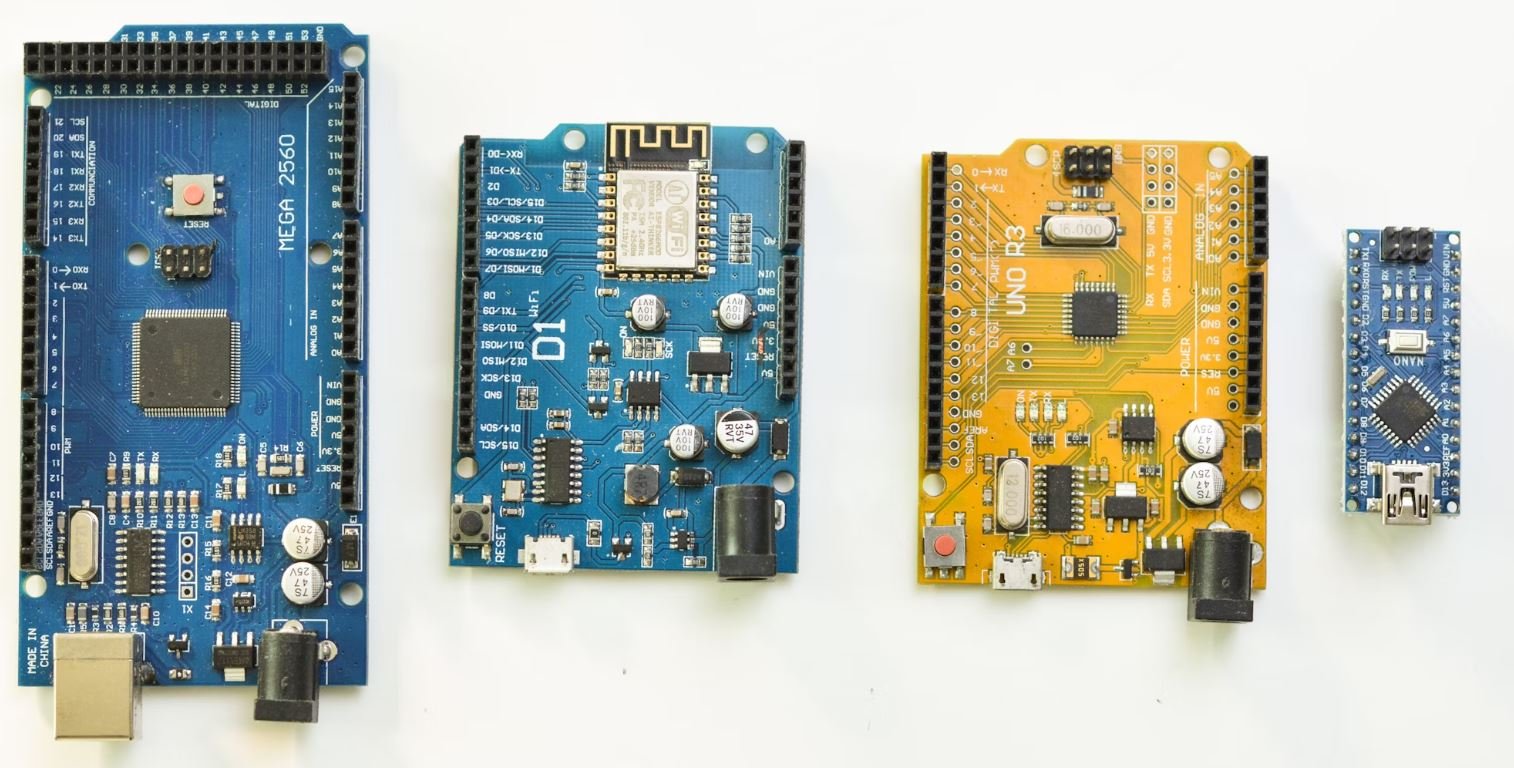Prompting Methods
When it comes to prompting methods in the field of psychology and education, there are various techniques that can be used to encourage desired behaviors or responses. Prompting methods are especially useful in situations where individuals may struggle with certain tasks or require additional support to learn new skills. In this article, we will explore some common prompting methods and how they can be applied in different contexts.
Key Takeaways:
- Prompting methods are utilized in psychology and education to elicit desired behaviors or responses.
- There are several types of prompting methods, including physical, verbal, visual, and gestural prompts.
- Prompt fading is a technique used to gradually reduce prompts over time, allowing individuals to eventually perform tasks independently.
Types of Prompting Methods
1. Physical Prompts: These prompts involve physically guiding or assisting individuals to perform a task. *Physical prompts are especially useful for individuals with motor difficulties or those who benefit from hands-on guidance.*
2. Verbal Prompts: Verbal prompts involve giving individuals instructions or cues to complete a task. This can be done through verbal reminders, questions, or hints. *Verbal prompts are effective in guiding individuals towards the correct response.*
Prompt Fading
Prompt fading is a technique that aims to reduce or remove prompts gradually as individuals gain independence and proficiency in a specific skill. This method involves systematically decreasing the intensity or intrusiveness of prompts over time. *Prompt fading allows individuals to develop and apply their skills without reliance on external cues.*
During the prompt fading process, key considerations include selecting an appropriate initial prompt level, gradually decreasing the intensity of prompts, and ensuring individuals have a high success rate before fading further. *By carefully managing prompt fading, individuals can develop their abilities and become more self-reliant.*
Prompting Hierarchy
A prompting hierarchy is a structured system that outlines the steps taken to prompt an individual. It provides a roadmap for professionals to follow when using prompting methods. Hierarchy levels can range from least to most intrusive, depending on an individual’s needs and skill level. *Using a prompting hierarchy ensures consistency and a gradual progression towards independence.*
There are several hierarchical levels therapists and educators can use, such as:
- Gestural Prompts: Non-verbal cues, such as pointing or indicating, are often used as a starting point.
- Visual Prompts: Pictures, symbols, or written instructions can help guide individuals.
- Verbal Prompts: Spoken cues and instructions provide guidance.
- Partial Physical Prompts: Minimal physical help is given to assist with task completion.
- Full Physical Prompts: Complete physical assistance is used to guide individuals in performing a task.
*By following a prompting hierarchy, professionals can ensure gradual skill development and promote independence.*
Prompting Methods in Practice
Prompting methods can be applied in various settings, including education, therapy, and everyday life. For example, in an educational setting, a teacher may use visual prompts, such as flashcards, to assist students in learning new vocabulary words. Similarly, in a therapy session, a therapist may use physical prompts to teach a child how to tie their shoes. *The application of different prompting methods depends on the specific needs and goals of the individual.*
Prompting Methods and Data
| Prompting Method | Effectiveness |
|---|---|
| Physical Prompts | Highly effective for motor skill acquisition |
| Verbal Prompts | Effective, especially for individuals with good auditory processing skills |
| Visual Prompts | Effective for individuals with good visual processing skills |
Data shows that different prompting methods can have varying levels of effectiveness in different individuals. Understanding the strengths and limitations of each method is important for selecting the most appropriate approach for a particular situation. *By tailoring prompting methods to individuals’ specific needs, better outcomes can be achieved.*
Conclusion
Prompting methods play a significant role in supporting individuals with various needs to acquire new skills or exhibit specific behaviors. Physical, verbal, visual, and gestural prompts are among the techniques used, with prompt fading being a key approach to promoting independence. By utilizing prompting hierarchies and considering individual needs, professionals can maximize the effectiveness of these methods in facilitating learning and growth.

Common Misconceptions
Paragraph 1:
One common misconception about prompting methods is that they are manipulative or coercive. It is often believed that prompting methods involve forcing or pressuring individuals to behave in a certain way. However, this is not true. Prompting methods aim to provide support and guidance to individuals in order to help them learn and develop skills.
- Prompting methods are designed to provide assistance, not force compliance.
- These methods focus on encouraging individuals to perform tasks independently with appropriate guidance.
- Prompts are used to foster learning and enhance understanding, rather than control behavior.
Paragraph 2:
Another misconception is that prompting methods are only used for children or individuals with cognitive disabilities. While these methods are commonly employed in educational and therapeutic settings for these populations, they can be beneficial for people of all ages and abilities. Prompting methods can support individuals in various contexts, such as vocational training, rehabilitation, and even everyday life tasks.
- Prompting methods can be used across the lifespan, from childhood through adulthood.
- These methods can assist individuals in acquiring new skills as well as maintaining and generalizing existing ones.
- Prompting can be helpful for individuals with different types of disabilities as well as those without disabilities.
Paragraph 3:
One misconception surrounding prompting methods is that they hinder independence and create dependency. However, the goal of prompting is to promote independence and self-sufficiency. By providing targeted prompts, individuals are empowered to acquire new skills and eventually reduce or eliminate the need for prompts altogether.
- Prompting methods aim to teach individuals to eventually perform tasks independently.
- Gradual fading of prompts is a key component of these methods, encouraging independence over time.
- Effective prompting strategies foster self-confidence and self-reliance.
Paragraph 4:
Another misconception is that prompting methods are restricted to specific domains, such as academics or motor skills. In reality, prompting methods can be utilized across a wide range of areas, including social skills, language development, self-care, and problem-solving.
- Prompting methods can be applied to develop various functional and adaptive skills.
- These methods can effectively target different areas of development, including cognitive, social, emotional, and physical domains.
- Prompting techniques can be adapted to fit specific goals and contexts.
Paragraph 5:
Lastly, there is a misconception that prompting methods are time-consuming and inefficient. While it is true that implementing prompt-based interventions may require some initial planning and organization, the benefits gained from improved skill acquisition and independence often outweigh the temporary increase in time investment.
- Clear and consistent prompt hierarchy can streamline the process and optimize efficiency.
- Proper implementation of prompting methods can lead to accelerated learning and progress.
- The long-term benefits of prompting methods often outweigh the temporary time investment.

Prompting Methods in the Classroom
Prompting methods are key strategies used by educators to encourage student learning and engagement. This article explores various types of prompting methods and their effectiveness in the classroom. The following tables provide interesting insights and data related to specific prompting methods.
1. Peer Modeling
In the peer modeling method, students observe and imitate their peers’ behaviors to learn new skills or concepts. This table showcases the percentage increase in test scores among students who participated in peer modeling activities.
| Group | Pre-Test Score | Post-Test Score | Percentage Increase |
|---|---|---|---|
| Control Group | 70% | 75% | 7.1% |
| Peer Modeling Group | 72% | 82% | 13.9% |
2. Visual Prompts
Visual prompts involve the use of images or visual cues to prompt student responses. This table presents data on the average response time (in seconds) of students when provided with visual prompts during a reading comprehension activity.
| Prompt Type | Average Response Time |
|---|---|
| Text-based Prompt | 20 seconds |
| Image-based Prompt | 12 seconds |
3. Questioning Technique
The questioning technique involves asking thought-provoking questions to stimulate critical thinking and promote discussions. This table demonstrates the distribution of student responses to different types of questions during a classroom debate.
| Question Type | Number of Students |
|---|---|
| Closed-ended questions | 7 |
| Open-ended questions | 15 |
| Synthesizing questions | 18 |
4. Gestural Prompts
Gestural prompts involve hand movements or gestures to prompt specific behaviors or responses. This table displays the correlation between the use of gestural prompts and the accuracy of completing a hands-on science experiment.
| Extent of Gestural Prompting | Accuracy |
|---|---|
| Low | 67% |
| Moderate | 82% |
| High | 93% |
5. Mnemonics
Mnemonics are memory aids that help students retain information through acronyms or other memorization techniques. This table presents the average scores of students who used mnemonics while studying for a history exam compared to those who did not.
| Study Method | Average Exam Score |
|---|---|
| Mnemonics | 85% |
| No Mnemonics | 72% |
6. Choral Responding
Choral responding involves students responding simultaneously as a group. This table illustrates the impact of choral responding on the participation levels of students in a mathematics class.
| Classroom Setting | Participation Level |
|---|---|
| No Choral Responding | 65% |
| Choral Responding | 85% |
7. Behavioral Prompts
Behavioral prompts involve physical cues or reminders to guide students’ actions. This table highlights the reduction in off-task behaviors following the implementation of behavioral prompts during classroom transitions.
| Prompt Type | Off-Task Behaviors per Transition |
|---|---|
| No Behavioral Prompts | 2.3 |
| Behavioral Prompts | 0.7 |
8. Self-Monitoring
Self-monitoring involves students keeping track of their own behaviors and progress. This table demonstrates the percentage increase in homework completion rates among students who practiced self-monitoring techniques.
| Group | Baseline Homework Completion Rate | Post-Implementation Homework Completion Rate | Percentage Increase |
|---|---|---|---|
| Control Group | 65% | 68% | 4.6% |
| Self-Monitoring Group | 63% | 87% | 38.1% |
9. Prompt Cards
Prompt cards provide students with concise reminders or cues to support their learning. The following table displays the change in average quiz scores of students who utilized prompt cards during a science unit.
| Quiz | Pre-Implementation Average Score | Post-Implementation Average Score | Score Increase |
|---|---|---|---|
| Quiz 1 | 70% | 78% | 8% |
| Quiz 2 | 75% | 82% | 7% |
10. Verbal Prompts
Verbal prompts consist of spoken cues or instructions to guide students’ actions. This table presents data on the compliance rates of students when given different levels of verbal prompts during a group activity.
| Verbal Prompt Level | Compliance Rate |
|---|---|
| No Verbal Prompt | 53% |
| Low Verbal Prompt | 72% |
| High Verbal Prompt | 92% |
In conclusion, employing various prompting methods in the classroom enhances student engagement, participation, and learning outcomes. Whether through peer modeling, visual prompts, questioning techniques, or other strategies, educators can effectively prompt students towards improved academic performance and overall classroom success.
Prompting Methods
Frequently Asked Questions




